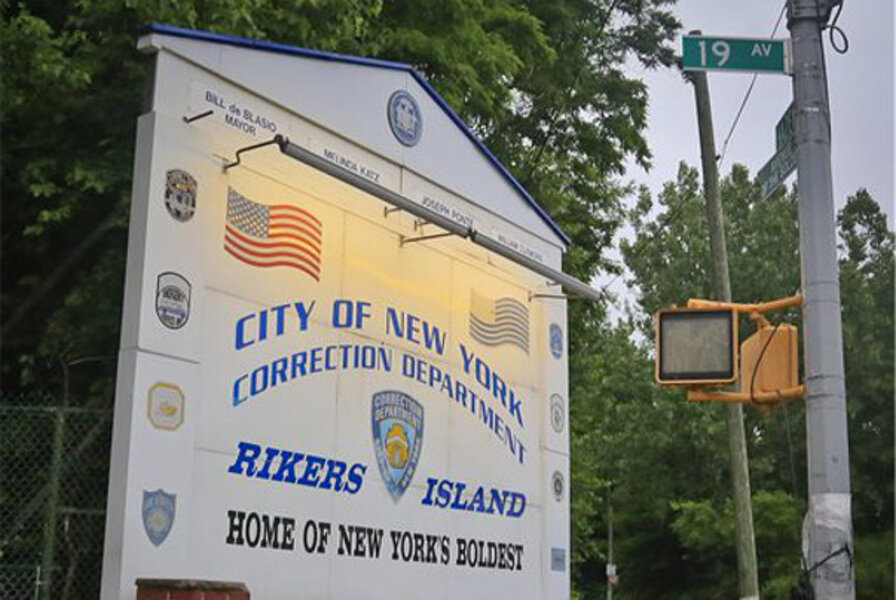Treatment, not jail, in NYC: 'Positive step forward' will cost $130M
Loading...
| NEW YORK
Experts in corrections, mental health, and law enforcement called Mayor Bill de Blasio's $130 million plan to steer mentally ill and drug-addicted suspects to treatment instead of incarceration an encouraging first step toward repairing New York City's broken jail system.
But they cautioned that the ambitious plan de Blasio announced Tuesday, aimed largely at "frequent flier" suspects who repeatedly end up jailed on minor offenses because there is nowhere else for them to go, will face enormous challenges.
"There's a lot of moving parts there," said Michael Thompson, director of the Council of State Governments Justice Center, a criminal justice nonprofit. "There's a reason why this is difficult: You're trying to do things at multiple points and you're talking about a huge volume of people."
De Blasio's proposed reforms are based on the recommendations of a task force he appointed following a series of reports by The Associated Press detailing problems at the city's massive Rikers Island jail complex, including the deaths of two inmates suffering from serious mental illness.
The changes include 36-hour training courses for police officers on how to identify and interact with people who have behavioral health issues, the creation of two drop-off treatment centers for low-level offenders and giving judges more leeway to order supervised release and treatment instead of jail.
But those proposals generated concerns from some who wondered how the changes — many of them pilot programs that will be regularly tracked over the next year — will function in practice.
"It's definitely a positive step forward," said Patrick Markee, director of advocacy at Coalition for the Homeless. "But the most important issue remains permanent affordable housing with support services and the real problem is we have a huge shortage of that kind of housing."
For Kenneth Dudek, president of Fountain House, a community center for 1,200 mentally ill people in midtown Manhattan, the decision to train 5,500 officers immediately with a 36-hour course and the entire 35,000 force later seemed, while encouraging, a bit daunting.
"The 36-hour training piece is great but not nearly enough," he said, noting that other police programs might be more effective, like one in Memphis, Tennessee, where specially trained units are called to all incidents involving the mentally ill.
Norman Seabrook, president of the correction officers' union, echoed that point, calling more training for guards an important tool but only if it was "credible training."
And Patrick Lynch, president of the rank-and-file police officers' union, said that while he's supportive of more training, his preference would be for the city to do a better job of keeping the mentally ill off of the streets altogether.
De Blasio — who has dubbed the jails "de facto mental health facilities" — told reporters on Tuesday that while some jail reforms already implemented are beginning to show signs of progress, long-term changes will require more time to take root.
"This is going to be a long process by definition, because it was not years, it was decades in the making, that's how broken our correction system was," he said.
While the overall jail population has dropped in recent years, the ratio of those with a mental health diagnosis has soared to 40 percent of the roughly 11,000 daily inmates, up from 24 percent in 2007.
A third of them suffer from serious mental illnesses such as bipolar disorder and schizophrenia, and officials say the mentally ill are both more likely to be victims and perpetrators of jail violence. That's compounded by the fact that 85 percent of all inmates have a substance abuse disorder.
Jerome Murdough, a seriously mentally ill inmate who an official told the AP earlier this year "baked to death" in a cell that was 101 degrees after he was unable to make $2,500 bail on a misdemeanor trespassing charge, would likely have qualified for diversion had the program been in place in February, experts said.
"It means a lot to me," said his mother, Alma Murdough, "knowing that Jerome's death was not in vain."
___
Associated Press writer Jonathan Lemire in New York contributed to this report.







